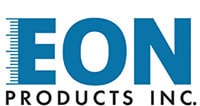The Importance of Proper Data Analysis in Groundwater Monitoring
Groundwater monitoring is a critical aspect of environmental assessment, resource management, and contamination cleanup efforts. Accurate data analysis not only informs stakeholders of current conditions but also guides remediation and protection strategies. This article delves into the best practices and challenges in analyzing data from groundwater samples, with a focus on the treatment of passive samples.
Best Practices in Data Analysis
Groundwater monitoring data offers a snapshot of the subsurface environment’s health. Best practices in data analysis involve:
- Temporal Consistency: Regular sampling provides a timeline of data that can reveal trends.
- Spatial Accuracy: Precise location mapping ensures data relevance to specific contamination sites or aquifers.
- Analytical Precision: Utilizing accredited laboratories and validated methods for analysis guarantees the reliability of data.
However, challenges abound. Data variability due to seasonal changes, cross-contamination risks during sampling, and the complexity of subsurface geology can skew results. Addressing these requires a methodical approach to sampling and analysis.
Groundwater monitoring projects encounter a variety of contaminants ranging from volatile organic compounds (VOCs) to heavy metals and emerging contaminants like PFAS and 1,4 Dioxane. Each type of contaminant presents unique challenges and considerations in data analysis, often requiring specialized approaches to ensure accurate assessment and interpretation.
Volatile Organic Compounds (VOCs)
Challenges:
- Sample Preservation: VOCs are prone to evaporation and degradation. Therefore, maintaining the integrity of the sample from the field to the laboratory is crucial.
- Detection Limits: Many VOCs are harmful at very low concentrations, necessitating highly sensitive analytical methods.
Considerations:
- Method 8260: This is a standard EPA method for analyzing VOCs using gas chromatography/mass spectrometry (GC/MS).
- Low-Flow Sampling Techniques: These can be used alongside passive sampling to reduce disturbance of the sample and prevent loss of VOCs.
Heavy Metals
Challenges:
- Particulate Association: Metals can be present in dissolved form or bound to particles, and distinguishing between these forms is essential for accurate risk assessment.
- Oxidation States: The toxicity and mobility of metals can vary significantly with their oxidation state, which can change during sampling and storage.
Considerations:
- Sequential Extraction Procedures: These are used to differentiate between the speciated forms of metals.
- Acidification: Adding acid to samples can preserve metals in their dissolved state for analysis.
PFAS
Challenges:
- Diverse Chemical Properties: These contaminants have a wide range of chemical properties and behaviors in the environment, making standardized analysis difficult.
- Difficulty to Destroy: PFAS are widely known as “forever chemicals” due to their lack of degradation and difficulty to destroy. Reliable and cost effective remediation methods are currently non-existent and are a focus for many environmental companies today.
- Unknown Health Impacts: The health impacts of many emerging contaminants at trace levels are not well understood, complicating risk assessment.
Considerations:
- Advanced Analytical Techniques: Techniques such as liquid chromatography-tandem mass spectrometry (LC-MS/MS) are often required for these contaminants.
- Low Cost Investigation: Due to the low MCLs announced by the EPA for PFAS in drinking water, it is important that companies find technologies and adopt practices that decrease the cost of determining if PFAS is present. This will allow the allocation of more funds toward site remediation and cleanup.
Nutrients (Nitrogen, Phosphorus)
Challenges:
- Biological Activity: Nutrients are subject to biological uptake and transformation, which can rapidly change concentrations.
- Eutrophication Risk: Elevated levels can lead to eutrophication, and pinpointing sources is essential for mitigation.
Considerations:
- In Situ Sensors: These can provide real-time monitoring of nutrient levels.
- Isotopic Analysis: Nitrogen and phosphorus isotopes can help trace nutrient sources and pathways.
Organic Matter
Challenges:
- Complex Mixtures: Natural organic matter consists of complex mixtures of thousands of different chemicals, complicating analysis.
- Interference with Contaminant Measurements: Organic matter can bind with contaminants, affecting their detection and interpretation.
Considerations:
- Total Organic Carbon (TOC) Analysis: This provides a measure of the organic content in a sample and can be a proxy for organic matter.
- UV-Visible Spectroscopy: This can help characterize organic matter and understand its interactions with contaminants.
Proper data analysis begins with your sampling method and choosing the method that best suits the contaminates you are dealing with.
Passive Sampling: Revolutionizing Groundwater Data Collection
Passive groundwater sampling is an innovative method that offers several advantages over traditional techniques like pump-and-purge or low-flow sampling. This method uses a no-purge approach, allowing for the collection of samples without the need to remove large volumes of water. This reduces sample turbidity and avoids the disruption of the natural chemical conditions of the groundwater.
Benefits of Passive Sampling:
- Cost-Effectiveness: Reduces time in the field and the volume of water needing disposal or safe storage.
- Data Integrity: Minimizes disturbance to the water column, leading to representative samples that do not bias the sample.
- Enhanced Safety: Lowers the risk of exposure to contaminants for field technicians.
Data Interpretation: Navigating the Complexities
Proper interpretation of groundwater data from passive sampling is paramount. It involves understanding the geochemistry of the site, the behavior of contaminants, and the potential for biodegradation or natural attenuation. Analysts must consider:
- Contaminant Distribution: Recognizing the heterogeneous distribution of contaminants can affect sampling strategies.
- Geochemical Indicators: Parameters such as pH, redox potential, turbidity, and conductivity can provide insights into subsurface conditions.
- Time-Series Analysis: Evaluating changes over time can help distinguish between transient spikes and stable contamination levels.
Advancing Groundwater Monitoring with Passive Sampling
By offering an accurate representation of in-situ conditions, passive sampling can equip you with the data necessary to make informed decisions about remediation efforts and groundwater management.
The analysis of groundwater data, particularly from passive samples, is a cornerstone of effective environmental stewardship. Adhering to best practices in sampling and analysis, and overcoming the inherent challenges, ensures the protection of this vital resource for future generations.
Learn more about the benefits of passive groundwater sampling in The Ultimate Guide to Passive Groundwater Sampling.
